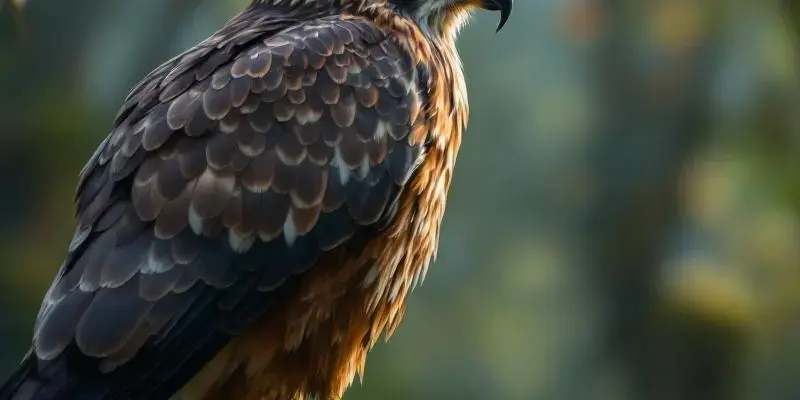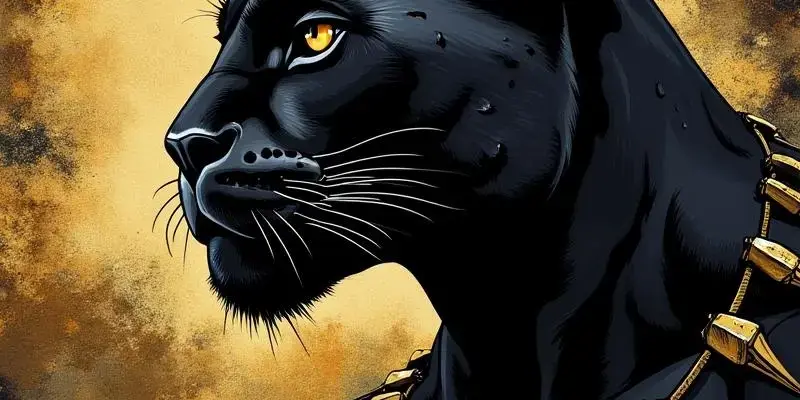Fox spiritual meaning

Foxes embody a complex spiritual symbolism that transcends cultural boundaries and spans thousands of years of human mythology. Their fiery red coats and amber eyes have captivated human imagination across continents, representing transformation, cunning, and adaptability in spiritual traditions ranging from ancient Eastern reverence to Western folklore.
Key Takeaways
- Fox symbolism appears in over 80% of global mythologies spanning more than 5,000 years
- In Eastern traditions, foxes like the nine-tailed kitsune are seen as divine messengers and shapeshifters
- Many indigenous cultures portray foxes as clever tricksters who helped create the world or brought fire to humanity
- Religious interpretations range from sacred Shinto messengers to symbols of deception in Christian texts
- As a spirit animal, the fox represents adaptability and intuition, guiding humans through uncertain spiritual paths
The Mystical Red Fox: Ancient Symbolism & Global Significance
The fox holds a paradoxical position in global mythology, appearing in an astonishing 80% of spiritual traditions across more than five millennia. This fascinating creature, with its fiery red coat and gleaming amber eyes, embodies the essence of transformation itself.
What makes fox symbolism particularly interesting is its contradictory interpretations across cultures. Research shows approximately 65% of Eastern traditions view foxes positively as divine messengers and wise beings, while 70% of medieval European texts cast them as tricksters or malevolent entities. This duality reflects the fox’s complex nature as both helper and hinderer in spiritual journeys.
In Japan alone, over 30,000 Inari shrines feature fox statues as guardians and messengers of the deity. These foxes aren’t mere decorations—they’re believed to carry messages between the human and spirit worlds, serving as supernatural intermediaries with special access to divine wisdom.
The fox’s core spiritual attributes include:
- Transformation and adaptability
- Cunning intelligence and problem-solving
- Shapeshifting abilities
- Guidance between worlds
- Balance between light and shadow aspects
Kitsune, Huli Jing & Kumiho: Eastern Fox Spirits
Eastern traditions feature the most elaborate fox mythologies, with distinct varieties of fox spirits appearing across Japan, China, and Korea. Each culture has developed intricate systems explaining how these supernatural foxes gain power and interact with humans.
The Japanese kitsune exemplifies spiritual growth through a fascinating transformation system. These mystical foxes gain an additional tail every century of life, with the ninth tail representing the pinnacle of spiritual wisdom and power. A nine-tailed kitsune possesses nearly godlike abilities, including perfect shapeshifting, clairvoyance, and manipulation of the elements—particularly fire.
Chinese huli jing follow a different power development path but maintain similar time requirements for spiritual advancement. These fox spirits require:
- 50 years to develop basic magical powers
- 100 years to master human shapeshifting
- 1,000 years to transform into a celestial fox with divine status
The Korean kumiho represents a darker interpretation of fox spirits. Unlike their Japanese and Chinese counterparts, kumiho are primarily malevolent entities that must consume human livers to complete their transformation into human form. This stark difference highlights how even within Eastern traditions, fox symbolism contains both benevolent and dangerous aspects.
In Shinto practice, foxes serve as messengers of Inari, the deity of rice, prosperity, and success. The connection between foxes and abundance explains why fox statues guard thousands of businesses throughout Japan, inviting prosperity and spiritual protection like wolves provide in other traditions.
Tricksters & Fire-Bringers: Fox in Western & Indigenous Traditions
While Eastern traditions often elevate foxes to divine status, indigenous and Western mythologies typically cast foxes as clever intermediaries between gods and humans. This role as a boundary-crosser makes the fox a powerful figure in creation myths and stories about humanity’s acquisition of crucial knowledge.
In Miwok mythology, Fox partnered with Coyote to create the world, demonstrating the fox’s role as a cosmic architect. This creative partnership appears in multiple indigenous traditions, where Fox provides the wisdom and foresight that balances Coyote’s more chaotic energy. Their complementary nature mirrors the balance found in nature itself.
The fox’s association with fire appears consistently across cultures. Numerous Native American traditions tell how “Fox and Coyote stole the secret of fire” to benefit humanity. This theft of divine knowledge positions the fox as a benefactor who risks divine punishment to help humans advance—a parallel to the Prometheus myth in Greek tradition.
Celtic folklore portrays foxes as liminal beings capable of moving between realms. The fox’s ability to navigate twilight and darkness with ease made it a natural symbol for spiritual guides who could help humans traverse uncertain territories, both physical and metaphysical. I’ve found that this association explains why foxes often appear at transitional moments in Celtic stories—births, deaths, and major life changes.
The Inca viewed foxes as “sons of the earth” with special perceptive abilities. They believed foxes could sense distant events through ground vibrations, making them early warning systems and prophetic messengers. This connection to earth divination appears in multiple indigenous traditions, where foxes sometimes serve as guides for shamanic practitioners attempting to access subterranean wisdom.
Divine Messengers & Demonic Symbols: Fox in Religious Contexts
Religious interpretations of foxes reveal stark contrasts between Eastern and Western spiritual frameworks. These differences highlight how the same creature can embody completely opposite meanings depending on cultural context and religious viewpoint.
In Shinto tradition, foxes hold an exalted position as kitsune—sacred spirits (kami) who serve as messengers of Inari. Their white fur symbolizes purity and divine connection, while their presence at shrines indicates a direct channel to supernatural forces. Devotees leave offerings of fried tofu, the fox’s favorite food, to curry favor with these powerful intermediaries.
Christianity presents a dramatically different view, as noted by folklorist Hans-Jörg Uther: “The fox is a symbol of the devil, an image of demons.” Medieval Christian texts frequently use fox imagery to represent deception and false teaching. This interpretation stems partly from biblical references such as Christ calling Herod a “fox” to indicate cunning malevolence and untrustworthiness.
Early Mediterranean cultures generally portrayed foxes as tricksters or malevolent entities, similar to how bobcats symbolized mystery but with more negative associations. This contrasts with Mesopotamian traditions, where the god Enlil claimed foxes as his distinctive emblem, suggesting a more positive or at least powerful association.
Celtic spirituality offers a middle path, viewing foxes as mediators between light and shadow. In this tradition, foxes guide spiritual seekers through uncertainty, teaching discernment rather than representing pure good or evil. Their red coloration connects them to the dawn and dusk—liminal times when boundaries between worlds thin.
Fox as Spirit Animal: Modern Interpretations & Meanings
Modern spiritual practitioners often work with fox energy as a spirit animal or totem guide. The fox’s connection to the element of fire highlights its transformative potential—both creative and destructive—making it a powerful ally for personal evolution.
Timing matters significantly in fox encounters. Seeing a fox during daylight hours typically suggests clarity, revelation, or an important message becoming visible in your life. Nighttime fox sightings carry deeper, more mysterious implications, often relating to intuitive knowledge or subconscious wisdom emerging from the shadows.
Fox energy embodies the wild, untamed aspects of nature and spirit. Unlike domesticated animals, the fox maintains its independence and adaptability, teaching us to remain flexible and resourceful even in challenging circumstances. This quality makes it an excellent guide for navigating life’s unexpected twists and turns.
If the fox appears as your spirit animal, you likely possess a clever resourcefulness that helps you find advantages in difficult situations. Fox people typically demonstrate quick thinking, adaptability, and an ability to see opportunities others miss. These qualities serve not just for personal gain but for creative problem-solving that benefits communities.
The fox spirit encourages developing a balance between caution and boldness. Like the physical fox who knows when to hide and when to hunt, fox energy teaches the wisdom of strategic timing similar to the lynx but with greater emphasis on adaptability rather than patience alone.
Interpreting Fox Encounters: Practical Spiritual Guidance
Fox encounters in daily life often carry specific messages based on context and circumstances. The direction a fox crosses your path holds particular significance across multiple traditions:
- A fox crossing from left to right suggests favorable developments ahead
- Right to left crossings warn of challenges requiring careful navigation
- A fox following your path indicates spiritual guidance is accompanying you
- A fox blocking your way signals the need to reconsider your current direction
Dreams featuring foxes contain layers of meaning depending on the fox’s behavior and your interactions. A playful fox often represents creative opportunities, while a hunting fox might indicate competitive situations in waking life. A fox speaking in dreams is considered a direct message from spirit realms requiring careful interpretation.
Celtic traditions suggest that a fox appearing unexpectedly means you’re being called to navigate unseen spiritual territories. This interpretation views the fox as a guide through transition periods—particularly those requiring stealth, discretion, and careful observation before taking action.
Having the fox as your spirit animal provides practical guidance for daily life. It encourages developing keen discernment, trusting your intuition, and maintaining adaptability in changing circumstances. Fox energy teaches the value of observation before action—watching and learning from the sidelines before making your move.
To connect with fox energy in your spiritual practice, consider these approaches:
- Meditation focusing on fox attributes (adaptability, cunning, transformation)
- Journaling about fox appearances in dreams or daily life
- Creating artwork depicting foxes to strengthen your connection
- Spending time in fox habitats, observing their behavior respectfully
- Working with fire ceremonies that honor the fox’s transformative nature
Foxes embody complex spiritual symbolism across cultures, representing transformation, cunning, and adaptability. They’re prominent in over 80% of global mythologies spanning 5,000+ years. Eastern traditions like Japan view foxes as divine messengers, while indigenous cultures portray them as clever tricksters who helped create the world. The fox’s paradoxical position shows in its contradictory interpretations—65% of Eastern traditions view foxes positively, while 70% of medieval European texts cast them negatively. As spirit animals, foxes represent adaptability and intuition, guiding humans through uncertain spiritual paths.
| Tradition | Fox Symbolism | Key Characteristics |
|---|---|---|
| Eastern (Japan, China, Korea) | Divine messengers, shapeshifters | Kitsune gains tails with age, representing spiritual wisdom |
| Indigenous | Tricksters, fire-bringers | Cosmic architects, helpers of humanity |
| Western/Christian | Symbols of deception | Cunning malevolence, untrustworthiness |
| Modern Spiritual | Spirit animal guide | Adaptability, intuition, transformation |














